- Joined
- Apr 10, 2019
- Messages
- 115
- Reaction score
- 27
Hello Everyone,
I was hoping to get some help with ID a bacteria outbreak in my tank. I believe it is either Cyano or Dino. I can't seem to figure out how to treat it and it is starting to grow on my corals and I would like to get rid of it.
My parameters to start:
Ammonia 0 ppm
Nitrite 0 ppm
Nitrate 0 - 5 ppm
Phospate 0-0.25 ppm
ALK 9
Calcium 420
Taken using API test kit
I have included pictures of the outbreak for help IDing. There is a lot of micro bubble build up on the rocks. Some of the Bacterica has started to turn white.
It has definitely reduced since I increased the amount of time my refugium was on. There is a lot of long stringy algae/bacteria in my sump. These photos were taken with a week of build up. There is little to know algae build up on the glass and rocks which makes me think it is a nutrient or feeding problem. I have a Refugium that I run 20 hrs a day. And I also run carbon. I do not have a UV but if this is what is needed to fix it, I will get one.
I don't believe it disappears at night as well.
What do you believe it is? How the frick do I get rid of it.
Thanks in advanced.
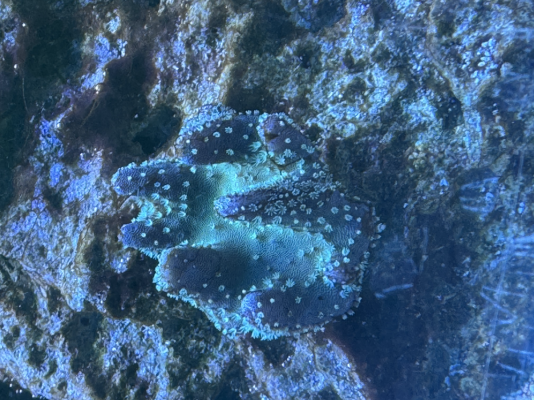
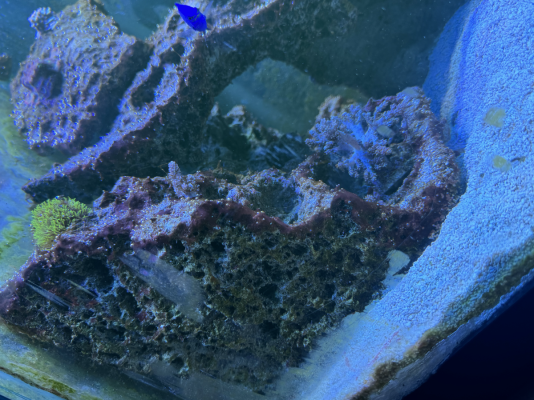
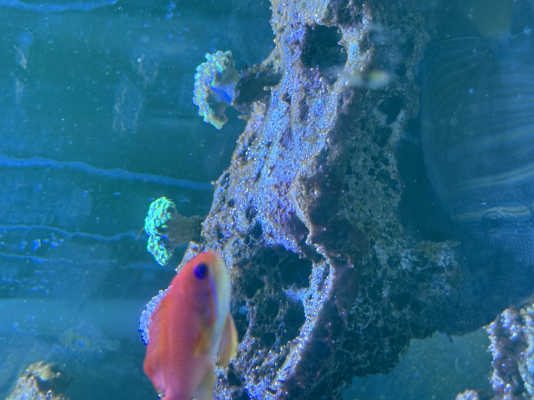
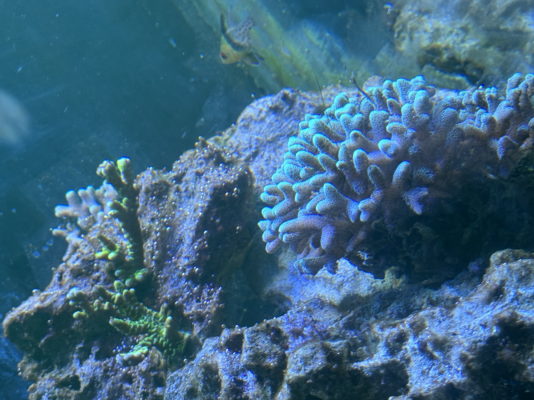
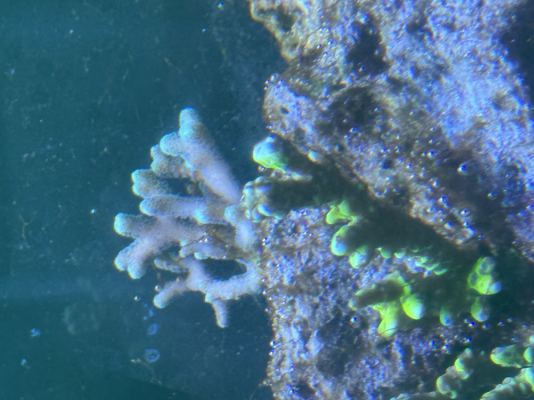
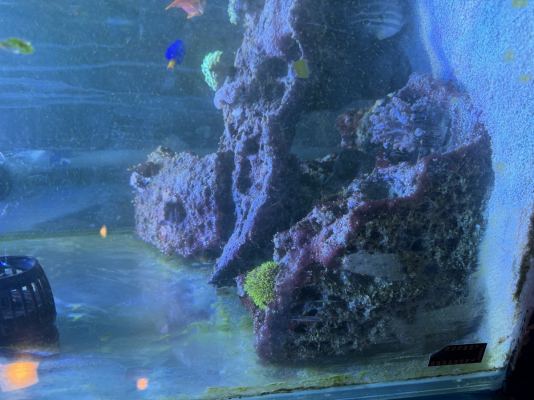
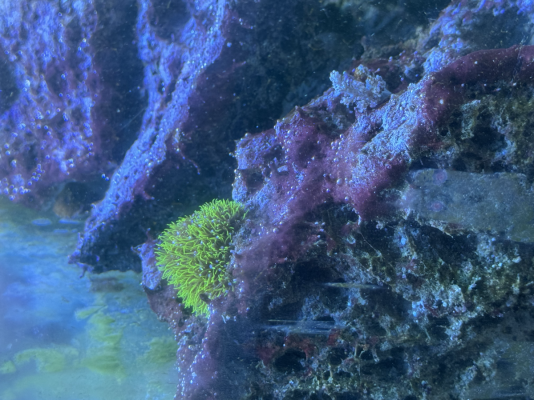
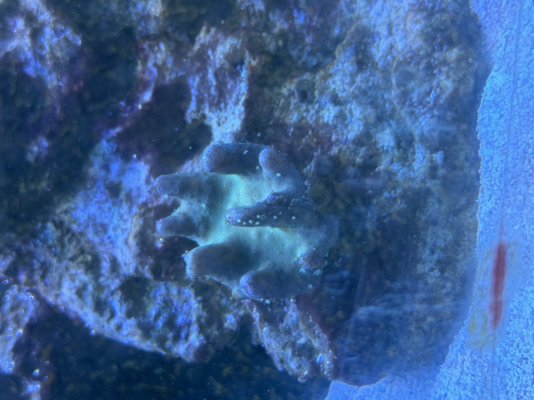
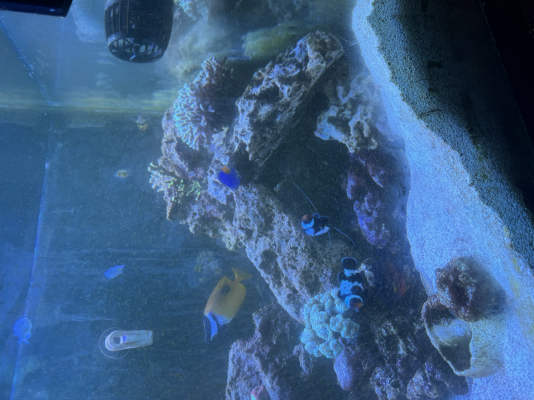
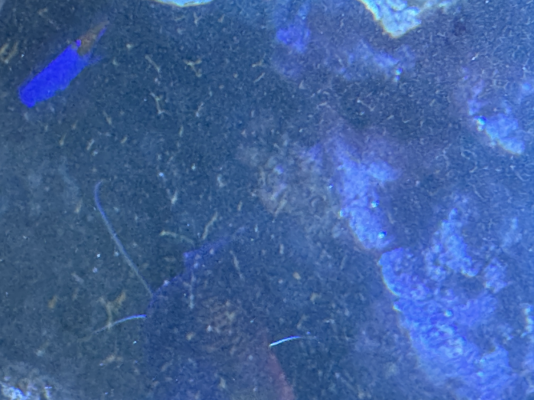

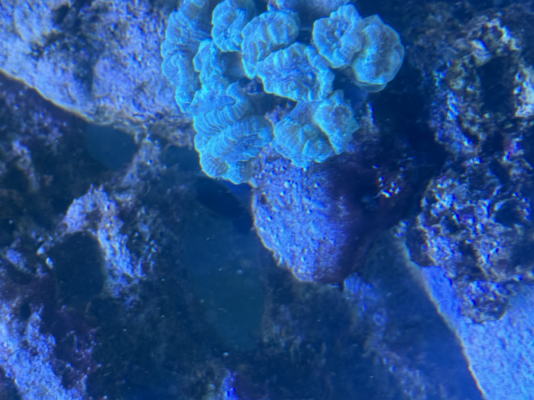
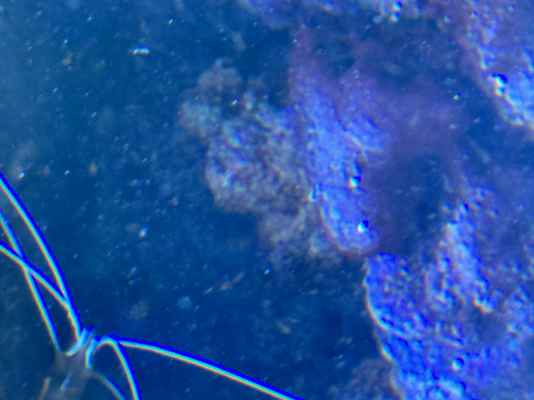
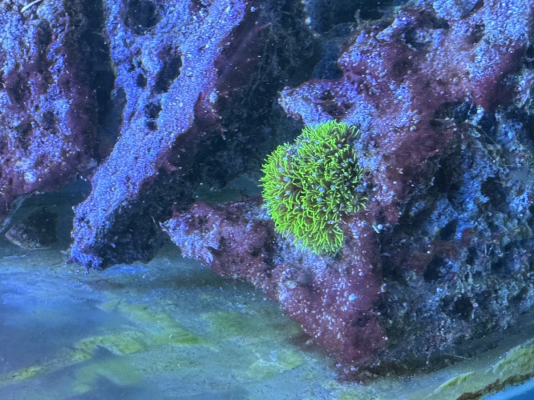
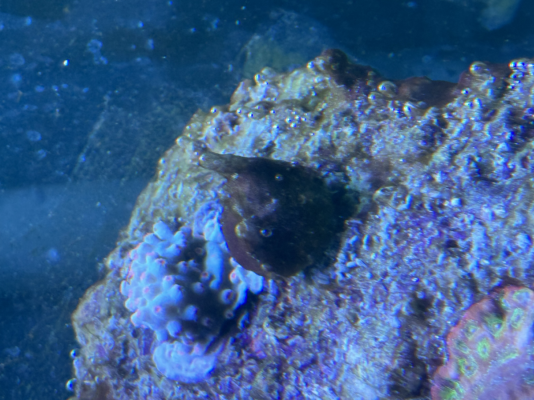
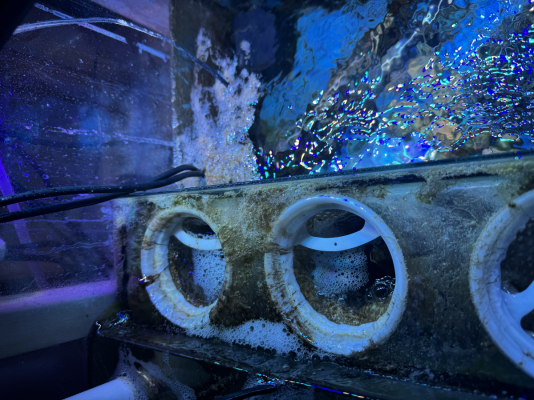
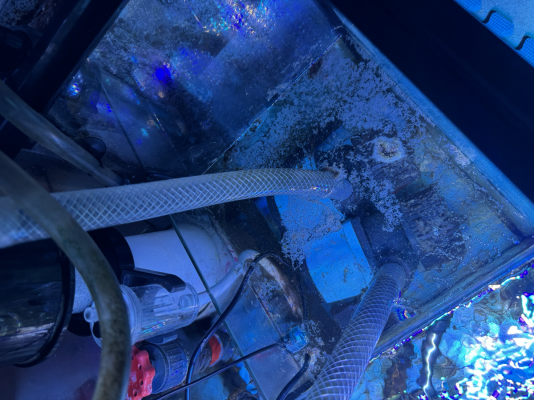
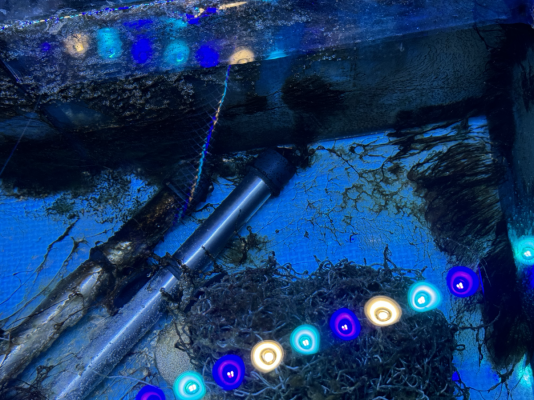
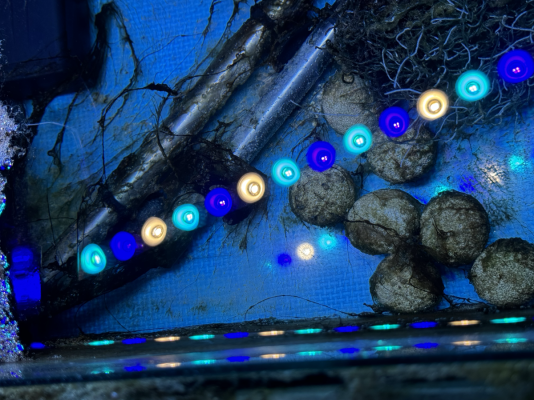
I was hoping to get some help with ID a bacteria outbreak in my tank. I believe it is either Cyano or Dino. I can't seem to figure out how to treat it and it is starting to grow on my corals and I would like to get rid of it.
My parameters to start:
Ammonia 0 ppm
Nitrite 0 ppm
Nitrate 0 - 5 ppm
Phospate 0-0.25 ppm
ALK 9
Calcium 420
Taken using API test kit
I have included pictures of the outbreak for help IDing. There is a lot of micro bubble build up on the rocks. Some of the Bacterica has started to turn white.
It has definitely reduced since I increased the amount of time my refugium was on. There is a lot of long stringy algae/bacteria in my sump. These photos were taken with a week of build up. There is little to know algae build up on the glass and rocks which makes me think it is a nutrient or feeding problem. I have a Refugium that I run 20 hrs a day. And I also run carbon. I do not have a UV but if this is what is needed to fix it, I will get one.
I don't believe it disappears at night as well.
What do you believe it is? How the frick do I get rid of it.
Thanks in advanced.






































